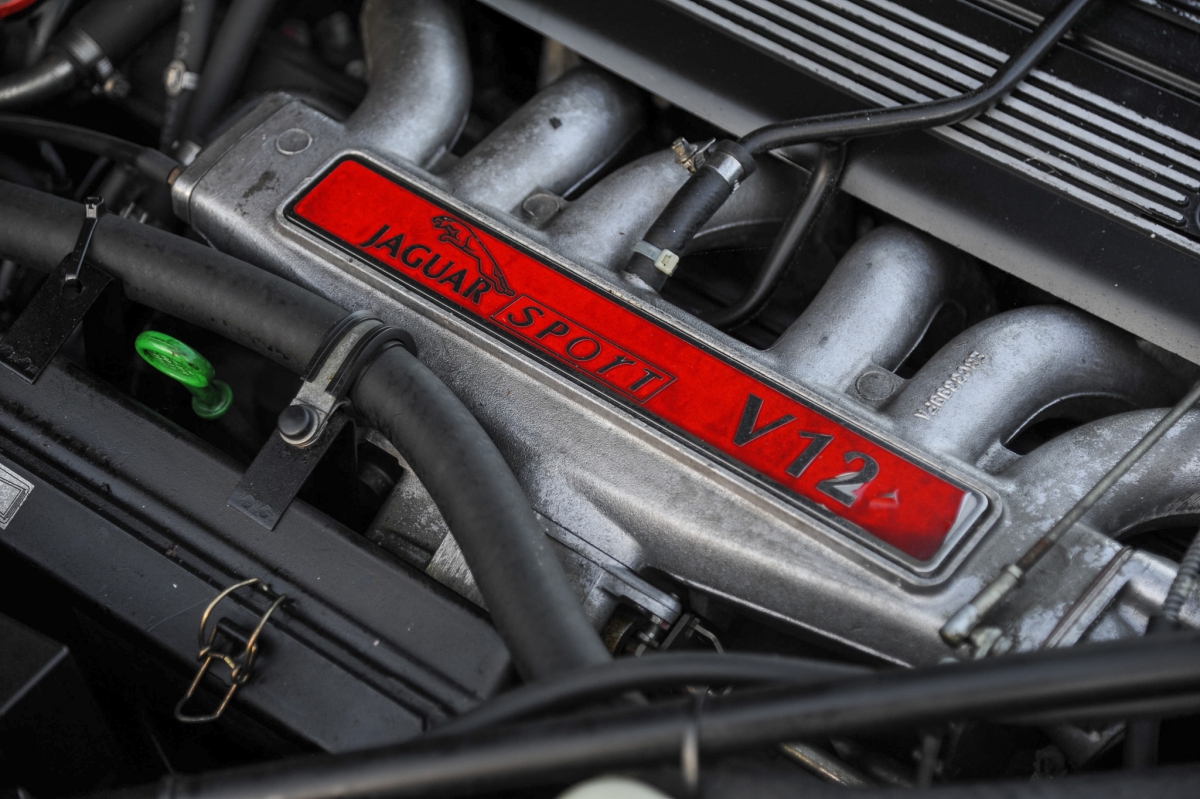Specifications
- Brand
-
Jaguar
- Model
-
XJR
- Construction year
- Mileage
-
66826 km
- Fuel
-
Gasoline
- Transmission
-
Automatic
- Color exterior
-
Flamenco red
- Power
- 243 kW / 330 HP
- Bodywork
-
Coupe
Show all specifications | Download pdf
- Color group exterior
-
Red
- Cylinder capacity
-
6000cm3
- Cylinders count
-
12
- Doors count
-
2
- Drive type
-
Rear
- Gears count
-
3
- Has carpass
-
No
- Interior color
-
Black
- Is metallic
- Interior color
-
Black
- Seats count
-
4
- Upholstery
-
Full leather
Description
Jaguar XJR S
First registration 28.01.1993
Delivered new at Autohaus Avalon Jaguar - Germany
66.826 km
V12 N.A. - 6.0L - 326 Hp - 246 Kw - RWD
GM400 3-Speed automatic transmission
Flamenco red with black leather interior
All original books
Currently in Belgian registration
Story
When the Jaguar XJR-S was launched in August 1988, Jaguar was riding the crest of a reputational wave, having just
claimed its 6th Le Mans victory and, in 1987, won the World Sportscar Championship.
It was a genuinely bespoke model produced by Jaguar Sport - a high-performance wing jointly owned by Jaguar and the Tom Walkinshaw Racing Group.
Initially powered by a 5.3-litre V12, the engine was upgraded in 1989 to a bespoke 6.0-litre unit with Zytek fuel injection. It was good for 334 bhp and 160 mph.
Boasting a new forged steel crankshaft, forged alloy pistons, modified air intake and a dual exhaust system, the engine was unique to the XJR-S
and was only phased out once Jaguar introduced its own 6.0-litre V12.
The XJR-S proved to be an immediate winner with contemporary journalists.
In a Motor Sport magazine group test, the Jaguar handed out a humiliating spanking to a Porsche 928 GT, a BMW 850i and a Ferrari Mondial T – no mean feat.
Motoring journalist Andrew Frankel recalled that test some years later: "Suddenly, almost 30 years on, we realised we were
looking at the true successor to the E-type; a car capable of doing to the likes of the Mondial what the E had done to the 250 GT.
Yet, unlike in the Porsche 928 GT, there was no fuss, no drama, no deafening din of tyres on bitumen; there was just calm, relaxed and blindingly fast progress".
While the XJR-S may have looked pretty much like a standard Jaguar XJR coupé, virtually every mechanical part was unique.
Each car left the factory as a hand-built unit from Jaguar Sport’s manufacturing facility at Bloxham, which had attained legendary
status as the maverick unit that built the seminal XJ220.
More pictures available
Visible only on appointment
For further information , please contact us +32 (0)2 681 81 00 & sales@british-sportscars.com
































































